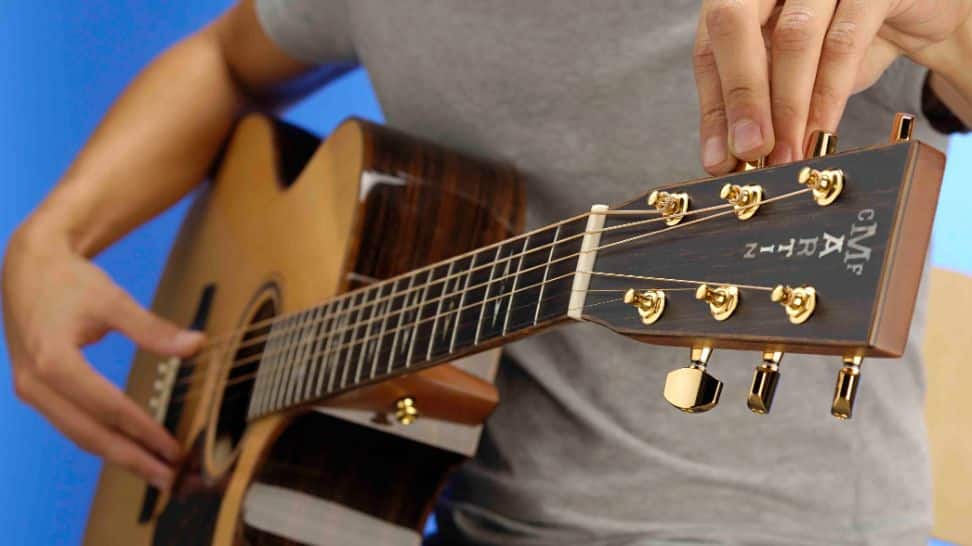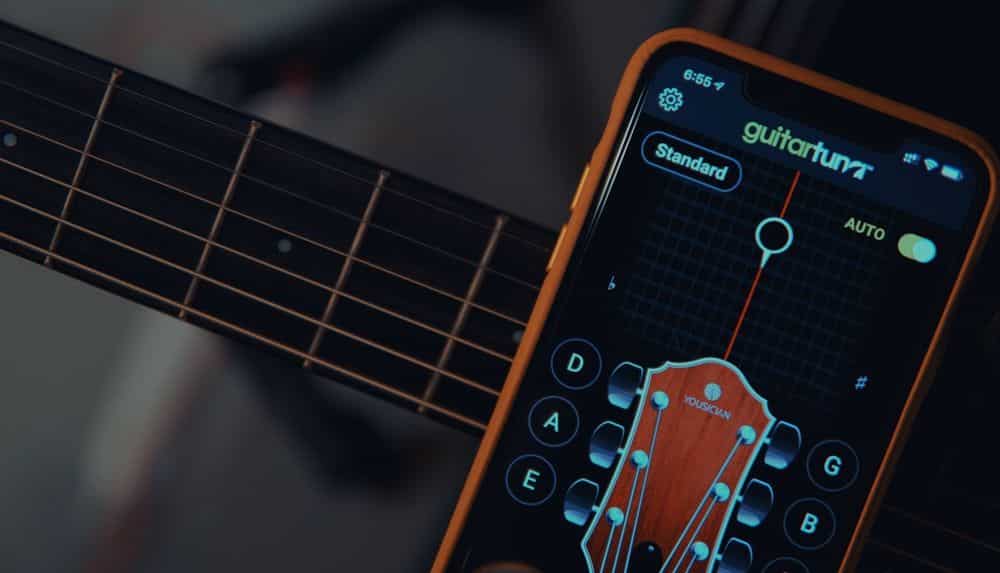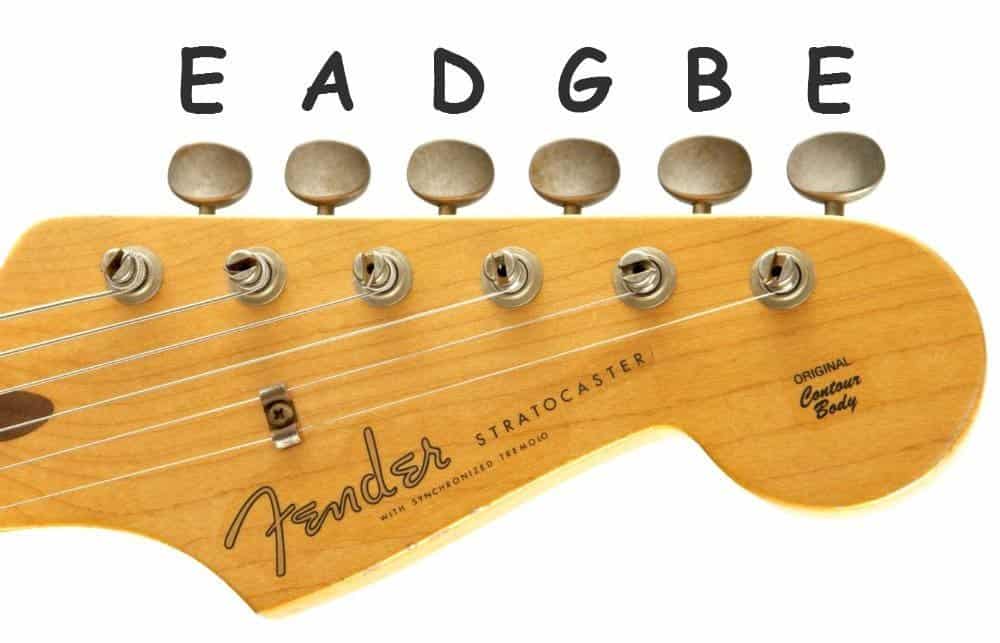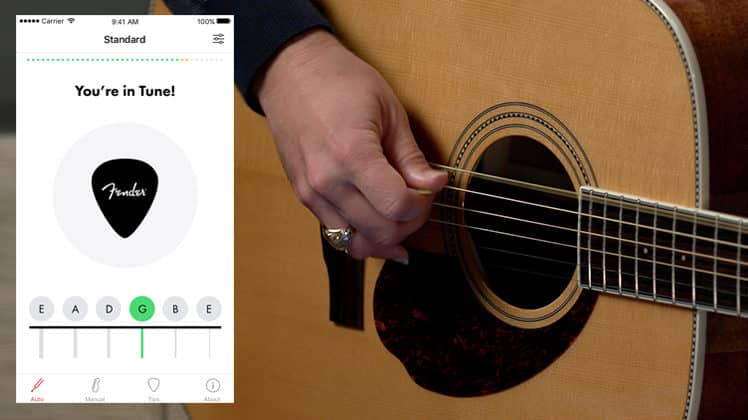
As a beginner, you might feel little uncomfortable while tuning your electric guitar yourself. Well, any good teacher would tell you that learning how to tune an electric guitar yourself is one of the most essential skills to remember and marks as a significant milestone in your journey of mastering the electric guitar or any string instrument for that matter.
By the way tuning an electric guitar is a skill, and first see to that you buy a best electric guitar. This article is a beginner’s guide and you will learn how to tune an electric guitar.
The technique for tuning any guitar be it electric, acoustic or classical; it remains the same. If you can tune an acoustic guitar, you can tune an electric one as well.
There are many different types of tunings, There are too many to name and you can also always create your own. For example and my personal favorite: DADFAD. However, for the sake of simplicity, we are going to stick with the standard tuning of EADGBE.
If you have been playing for a while, you might have noticed that guitars don't stay tuned. Guitars often go out of tune due to factors like humidity, temperature, taking them in and out of a bag or case. So, if you are serious about playing the guitar, be prepared to tune often.
This is a beginner’s guide on how to tune an electric guitar, so we are going to talk about the classic 6 string one, no 7 or 8 string guitars. Sorry, djent fans.
EQUIPMENTs NEEDed TO AN TUNE ELECTRIC GUITAR
Learning how to tune an electric guitar with your ears alone should be your goal. That being said, in the beginning, you do not have to worry about that. It takes a while to train your ears to the level where you know the relationship between notes and notice pitch variations.
So, just get yourself a Tuner. Tuners come in all shapes and sizes and actually are separated into three categories, namely:
about tuners
I will not be getting into too much detail into how different tuner’s work as their names make it pretty obvious how they work.
Microphone based tuners work using sound captured by the microphone, vibrations based tuners use the vibrations created by the strings and pedal tuners are the one’s that seem most useful on stage. But, by the time you are investing in getting pedals, you would have to learned how to tune your guitar with a tuner.
They all achieve the same goal at the end of the day. You can also use a Tuner App to tune your Guitar. I personally use the Fender Tune app and it is the one that I would recommend, but all apps do the same job equally well.

STEP BY STEP GUIDE ON HOW TO TUNE YOUR GUITAR with a tuner
Do you know how guitarists restring and tune their electric guitar? Well, they always start from the 6th string to avoid complications. So this is the format I will teach here.
Note: In order to change the tuning, you have to tighten or loosen the tension on the strings. To do that, you move the tuning pegs located on the headstock of your guitar. Familiarise yourself with how they work. Turning them one way tightens the strings (increases the pitch) and turning them the other way will loosen them (decrease the pitch).

6th string (Low E)
Get your tuner out as it is time to begin. Pluck the string and see what the tuner shows. If, for example, the tuner reads out D, that means you are an entire step down to the desired note E. So, you must tighten the string to reach E. In order to do that, move the tuning pegs associated with the Low E string and turn it till your tuner reads out E. (You can also use a Piano’s E as a reference to tune your E string or any other string if you own one).
5th or A string
You can stick to your tuner and do what you did above. Simply move the tuning pegs one way or another till the string reaches the note A. You can also do another thing, and it is a training for your ears, match the fifth fret of the low E string. The fifth fret on the low E string is an A note, same as the 5th string. That is why you can play the fifth fret, which is an A note, on the 6th/low E string and match the tone of your 5th/A string to it.
4th or D string
The pattern continues, just move down a string. Play the fifth fret of the 5th/A string, which is a D note. Tune your 4th string till it sounds just like it and voila!
3rd or G string
The same technique as mentioned above.
2nd or B string
The technique overall remains the same; however, instead of using the fifth fret of the 3rd/G string for reference, we will use the fourth. This is because the fourth fret on the G string, is a B note.
1st or high E string
The same technique as above, but we are back at the fifth fret.

THINGS TO REMEMBER
CONCLUSION
And that is how to tune an electric guitar with a tuner. I hope this article was helpful. I did put in some free advice, but I hope it was more useful than annoying.

Hello readers, welcome to my blog! I’m Stefan. I’m in hard love with the music and used to collect all kinds of musical instruments at my garage. While looking for the best instruments, initially, I’ve struggled a lot. Like me, some of you might be struggling to choose the best musical equipment. So, keep reading my articles and get the best musical instrument that is worth your pay.






